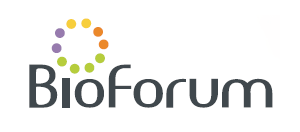21-22 JANUARY 2020, THE DAVID INTERCONTINENTAL HOTEL, TEL AVIV, ISRAEL
Analysis of antibody drug conjugates (ADCs) by imaged capillary isoelectric focusing (icIEF) and 458 nm fluorescence detection
Udo Burger, FAS, Bio-Techne, Wiesbaden, Germany (udo.burger@bio-techne.com)
Antibody drug conjugates (ADCs) are an attractive class of therapeutics because they combine the specificity of an antibody with the potency of a cytotoxic drug. However, the analytical characterization of ADCs is challenging because the antibody and conjugated drug have distinct attributes. One important quality attribute of ADCs is charge heterogeneity, which must be carefully monitored during process development. Imaged capillary isoelectric focusing (icIEF) is a useful tool for charge heterogeneity analysis, which traditionally relies on absorbance and native induced fluorescence (NIF) detection methods. Recently, the Maurice system enables fluorescence detection at 458 ± 30nm. This is particularly useful for ADC characterization because many ADCs have fluorescence in this region, and it allows for the quantification of the conjugate drug independently of the antibody for each charged isoform. In this study, we provide proof of concept using non-cytotoxic ADC mimics which are antibodies conjugated to fluorescent dyes to represent the cytotoxic drug. The fluorescent dye was conjugated at both low and high dye-to-protein molar ratios to mimic different drug-to-antibody ratios (DAR).
Our findings demonstrate that the fluorescent conjugate can be imaged independently of the protein signal, and the dye and antibody peaks can be assigned by overlaying the absorption and fluorescence profiles. Furthermore, differences in fluorescent signal intensity between the protein and conjugate can be accounted for by longer exposure times that increase sensitivity separately from the other channels. This work was conducted with lysine conjugates, which have acidic isoforms that orthogonally indicate the conjugation level by the 458nm fluorescence signal. For these conjugates, the 458nm fluorescence was shown to increase relative to the NIF by peak area percentage. It is therefore probable that ADCs with cysteine conjugation with no charged isoforms will also benefit from DAR quantitation by this method.
Organized & Produced by:

POB 4043, Ness Ziona 70400, Israel
Tel.: +972-8-9313070, Fax: +972-8-9313071
Site: www.bioforum.co.il,
E-mail: bioforum@bioforum.co.il